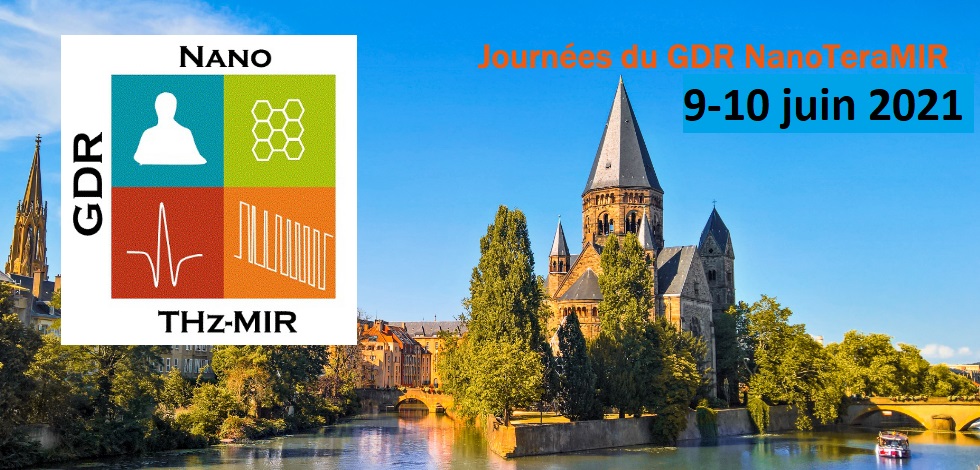Terahertz time domain spectroscopy (THz-TDS) remains so far the backbone of terahertz photonics in numerous applications. [1] Plasmonic microstructures and metasurfaces are particularly promising for improving THz spectroscopy techniques and promising for the development of biomedical and environmental sensors. [2] Highly doped semiconductors are suitable for replacing the traditionally-used noble metals, because their plasmonic behaviors are optically tuned with different geometry, size and interactions (gap effect) also in this spectral range. In figure 1A, a perfect absorber structure based on III-V semiconductor layers is presented on a GaSb commercial substrate template. A photonic absorption peak was targeted in the IR with the thickness of the GaSb spacer on top of a metallic mirror-like doped InAsSb layer. The InAsSb top layer was doped and microstructured to obtain a plasmonic resonance in the THz region. Figure 1B shows the visible light diffraction of the 1x1 mm2 micro-structure arrays fabricated by electron beam lithography and dry etching. In figure 1C, the darkest 1x1 mm2 squares correspond to an array of InAsSb linewidth of 14 and 16 mm with a constant pitch of 30 mm. Such contrast is related to the coupling between the plasmonic microstructure array and the incident light at a mean frequency region selected in the THz-TDS measurement. Thus, an intense color indicates a higher electric field in the C-slice view scale. In this particular C-slice view, a 2-2.05 THz mean frequency is selected. Finally, in figure 1D, the THz-TDS measurements of the minimum absorption reached (red dots) correspond with the simulation absorption map calculated by rigorous-coupled wave analysis [3].

|
Absorption modulation with semiconductor plasmonic microstructures from 1.1 to 2.5 THz
1 : Institut d'Electronique et des Systèmes
Université de Montpellier, Centre National de la Recherche Scientifique : UMR5214
860, rue Saint Priest, Bâtiment 5 - CC 05001 -34095 Montpellier Cedex 5 -
France
2 : Laboratoire Charles Coulomb
(L2C)
-
Site web
Université Montpellier II - Sciences et techniques, CNRS : UMR5221
1 place Eugène Bataillon Université Montpellier II 34095 Montpellier Cedex 5 -
France
3 : Institut d'Electronique et des Systèmes
* : Auteur correspondant
Université de Montpellier, Centre National de la Recherche Scientifique : UMR5214
|
| Personnes connectées : 1 | Vie privée |

|

